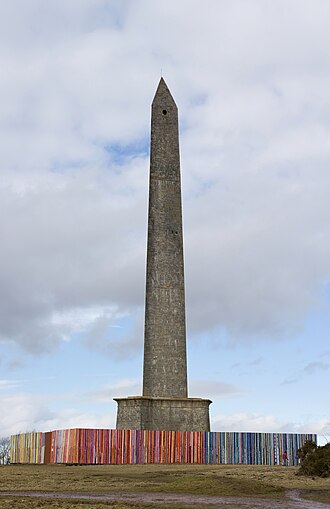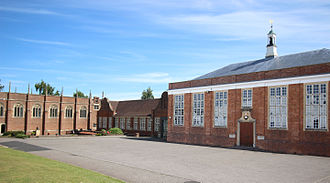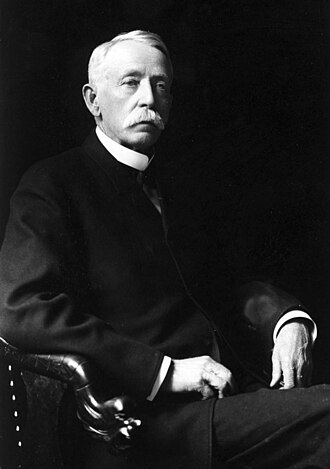Discover Your Roots
SIGN UPDiscover Your Roots
SIGN UPWellington is an English gender-neutral name that holds the meaning "From Weola's Town." This name has a rich historical significance and is associated with various notable individuals, including sports personalities like Papua New Guinean Rugby League player Wellington Albert and Brazilian footballer Wellington Carvalho dos Santos. Additionally, political figures such as Brazilian politician Wellington Dias and Chinese diplomat Wellington Koo have also borne this distinguished name. Fictionally, the name Wellington is known for its appearance in the long-standing British comic strip "The Perishers." With its English origin and the meaningful interpretation of "From Weola's Town," Wellington is a name that carries a sense of heritage and significance, making it a timeless and versatile choice for individuals of any gender.

The Wellington boot, also known as a welly, gumboot, or rain boot, is a waterproof rubber boot that gained popularity thanks to Arthur Wellesley, 1st Duke of Wellington. Originally adapted from Hessian boots, Wellington boots became a staple for the British aristocracy and middle class in the 19th century. The term "Wellington boot" originates from the Duke of Wellington, who instructed his shoemaker to modify the Hessian boot. During World War I and World War II, the demand for Wellington boots increased due to the need for suitable footwear in flooded and muddy conditions. Post-war, the lower cost and waterproof nature of rubber Wellington boots made them the preferred protective footwear in various industries. Steel-toe Wellingtons became indispensable in meeting occupational health and safety legislation. The Monopolies and Restrictive Practices Commission also addressed concerns about unfair pricing of rubber footwear, including Wellingtons. Today, Wellington boots are worn for a range of outdoor pursuits and are an essential item in many people's wardrobes.

The Wellington Monument is a 175-foot-high (53 m) triangular obelisk located on a point of the Blackdown Hills, 3 km (1.9 miles) south of Wellington in the English county of Somerset. It is a grade II* listed building and is the tallest three-sided obelisk in the world. The monument was designed to commemorate the Duke of Wellington's victory at the Battle of Waterloo. Construction of the original design commenced in 1817; a revised and cheaper design was eventually used, though, and building was completed in 1854. It is now owned by the National Trust, which closed the monument to the public in 2007, owing to safety concerns; surveys showed that extensive renovation work was needed. Repairs were completed, leaving the monument "now possibly in better condition than when it was first completed" and the monument reopened in August 2021. The monument was proposed in 1815 by William Sanford of Nynehead Court, and he started a public subscription to pay for it. Within months £1450 had been raised and a design competition was held. The winning entry envisaged a 95 feet (29 m) pillar with three cottages at the base to house old soldiers as caretakers. It was designed by Thomas Lee and the foundation stone was laid by Lord Somerville in 1817. The monument's design was inspired by an Egyptian obelisk, but in the shape of the type of bayonet used by

Wellington School is a co-educational fee-charging boarding and day school located in Wellington, Somerset, England. Established in 1837, the school operates on a 35-acre campus and has around 800 pupils, with approximately 150 boarders. It is a member of the Headmasters' and Headmistresses' Conference and operates its feeder preparatory school, Wellington Prep School, on the same campus. Originally founded as Wellington Academy, the school has a rich history and underwent several name changes before becoming Wellington School. The institution offers a range of sports facilities, music programs, and a Grade II listed chapel with a full-time Chaplain. The school has received praise from the Good Schools Guide for its friendly and purposeful environment, offering a sound education and developmental experience. With a focus on holistic development, Wellington School provides a well-managed and high-value educational experience for its students.

Wellington E. Webb, born on February 17, 1941, is an American politician and the first African American mayor of Denver, Colorado, serving from 1991 to 2003. Webb's political career began with serving in the Colorado House of Representatives and later as the regional director of the U.S. Department of Health, Education, and Welfare. As mayor, he focused on various development projects, including the completion of Denver International Airport and a new sports stadium, as well as advancements in public safety and economic development.Webb is known for his civic engagements and collaborations with his wife, former Colorado State Representative Wilma Webb. He has also been involved in various committees and initiatives, including the selection committee for the Rudy Bruner Award for Urban Excellence. In addition to his political endeavors, Webb is a published author, having released his autobiography, "The Man, the Mayor and the Making of Modern Denver," in 2007.Outside of his career, Webb has been married to Wilma Webb since 1969, and the couple has four children. Webb's legacy is honored with the Wellington E. Webb Municipal Office Building, which houses numerous municipal agencies and divisions from the City and County of Denver. He continues to be a prominent figure in civic discussions and has shown support for political candidates, including endorsing Barack Obama and Joe Biden in the 2008 presidential election.

Wellington R. Burt (1831–1919) was a prominent American lumber baron from Saginaw, Michigan, known for his vast wealth, estimated between $40 and $90 million at the time of his passing. He held various business interests, including lumber mills, iron mining, railroads, salt mines, and finances. Burt also ventured into politics, serving as the Mayor of East Saginaw and as a member of the Michigan Senate. His unconventional will, featuring a "spite clause" to settle a family feud, attracted significant attention. Following the fulfillment of the will's conditions in 2010, Burt's descendants eventually inherited the estate, valued at approximately $100 million. Burt's legacy is characterized by diverse perceptions, depicting him as a vindictive figure, a generous benefactor of Saginaw, and a notably wealthy American entrepreneur.Born in 1831 in Pike, New York, Burt hailed from a family of farmers and later became associated with Michigan's growth and development. His entrepreneurial journey commenced with his foray into the timber industry, leading to the establishment of Melbourne, a thriving community in Michigan. Despite facing setbacks, such as the destruction of his mill in 1876, Burt's business acumen enabled him to amass significant wealth through timber, iron mining, salt industry, railroad investments, and international ventures. His political career encompassed roles as mayor, Michigan State Senator, and a candidate for U.S
All images displayed on this page are sourced from Wikipedia or Wikimedia Commons.We use these images under their respective Creative Commons or public domain licenses. Wherever applicable, author attributions and license information are provided. If you believe an image is used incorrectly or outside its license terms, please contact us so that we can review and correct the issue.